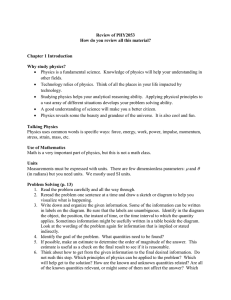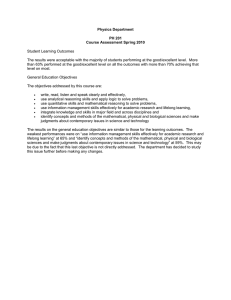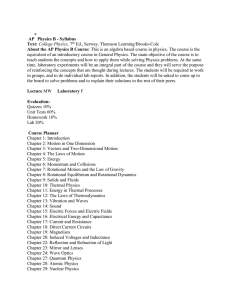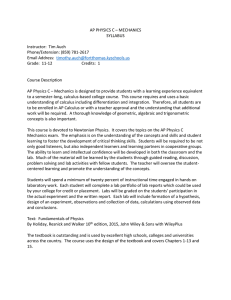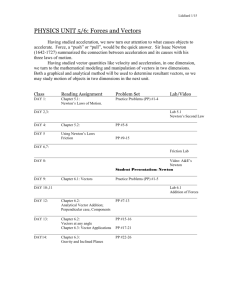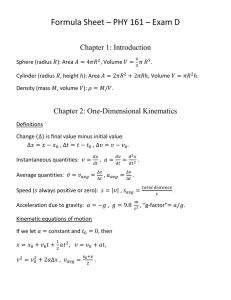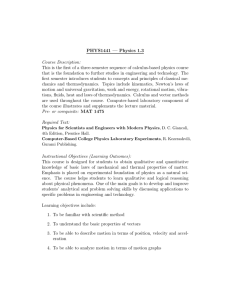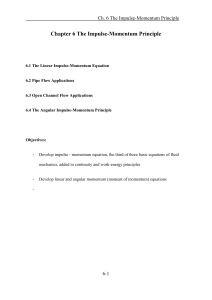advertisement
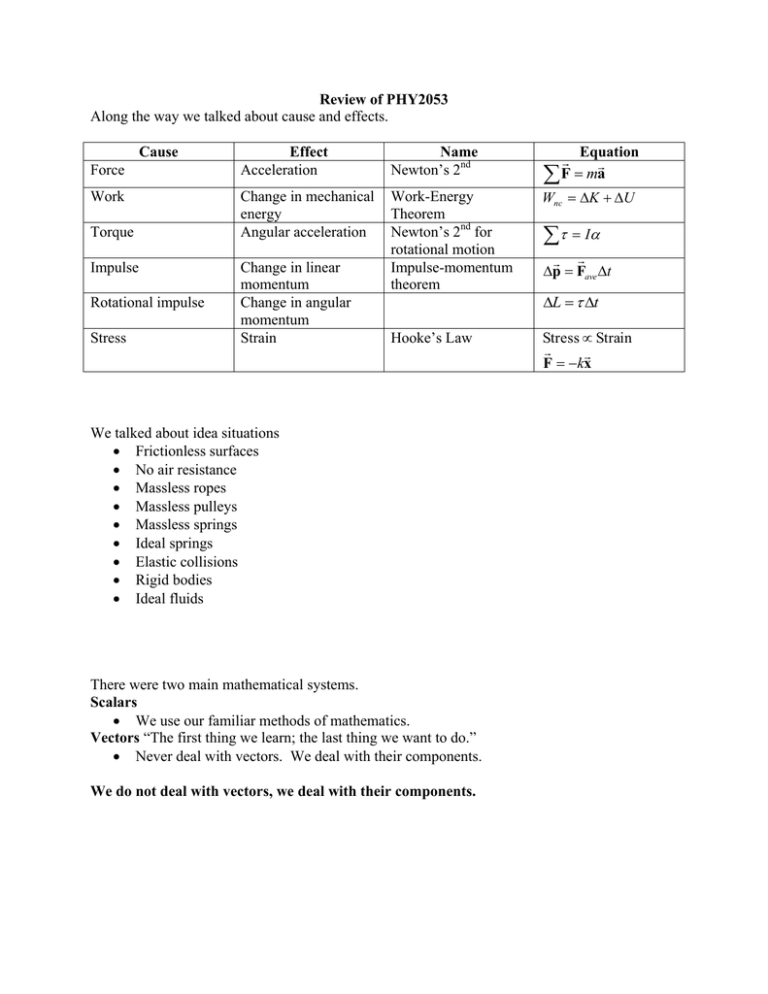
Review of PHY2053 Along the way we talked about cause and effects. Cause Force Work Torque Impulse Rotational impulse Stress Effect Acceleration Name Newton’s 2nd Equation F ma Change in mechanical energy Angular acceleration Work-Energy Theorem Newton’s 2nd for rotational motion Impulse-momentum theorem Wnc K U Hooke’s Law Stress Strain F kx Change in linear momentum Change in angular momentum Strain We talked about idea situations Frictionless surfaces No air resistance Massless ropes Massless pulleys Massless springs Ideal springs Elastic collisions Rigid bodies Ideal fluids There were two main mathematical systems. Scalars We use our familiar methods of mathematics. Vectors “The first thing we learn; the last thing we want to do.” Never deal with vectors. We deal with their components. We do not deal with vectors, we deal with their components. I p Fave t L t Here is an algorithm for adding vectors. The diagram is Figure 3.9 on page 61. Given A, A and B, B C AB Bx By B Ax Ay A Find components* Ax = A cos A, Ay = A sin A Bx = B cos B, By = B sin B C Add like components Cx = Ax + Bx , Cy = Ay + By Cx Bx Ax By Return to magnitude and direction format C Cx C y 2 C tan 1 Cy Cx Ay 2 Cy ** C Cy C Cx *Be careful with the angles given. The equations hold for angles measured counterclockwise from the +x-axis. **Be careful with tan-1 function on your calculator. If the x-component is negative, add 180o to the value found by your calculator. Chapters 1. Introduction 2. Motion along a line 3. Motion in a plane 4. Force and Newton’s laws of motion 5. Circular motion 6. Conservation of energy 7. Linear momentum 8. Torque and angular momentum 9. Fluids 10. Elasticity and oscillations 11. Waves 12. Sound We did many demonstrations in lecture. Hopefully they helped you to see the application of many physical principles. Combined with your experience, you can see physics around you. What were your favorite demos? A basketball travels through physics. Final Exam Topics 1. Vectors 2. Equations of uniformly accelerated motion 3. Newton’s Second Law 4. Uniform Circular Motion 5. Work-energy theorem 6. Impulse-momentum theorem 7. Equilibrium (a ladder problem) 8. Newton’s second law for rotational motion and rotational kinematics 9. Equation of continuity and Bernoulli’s equation 10. Simple harmonic motion 11. Traveling waves 12. Standing waves I hope you are ready for PHY2054. I think you are.
